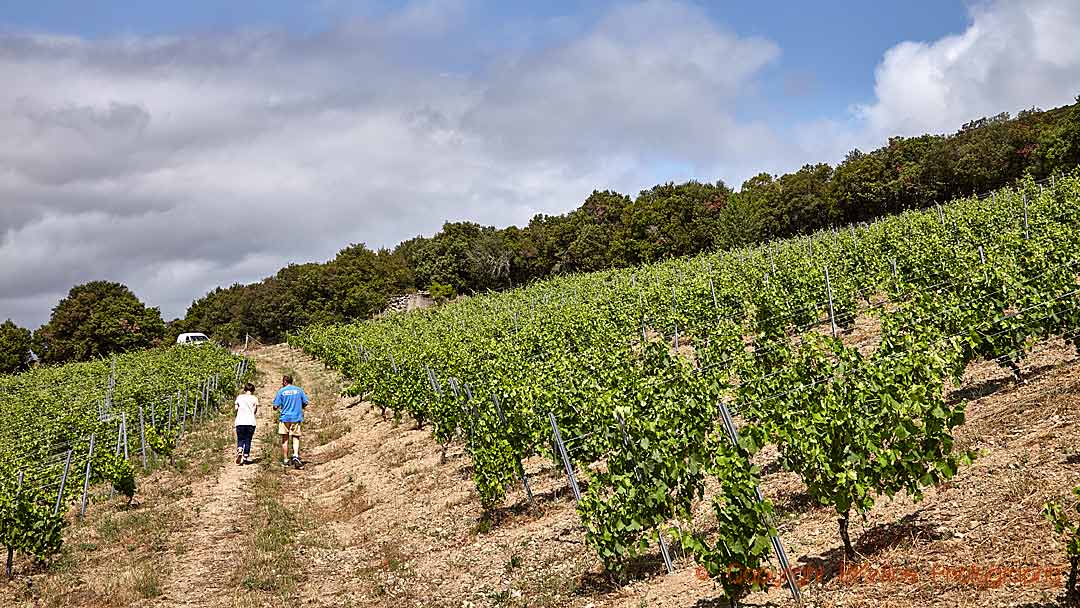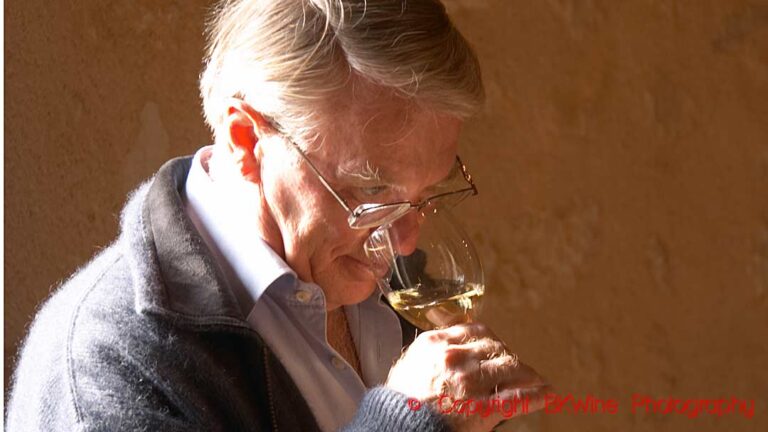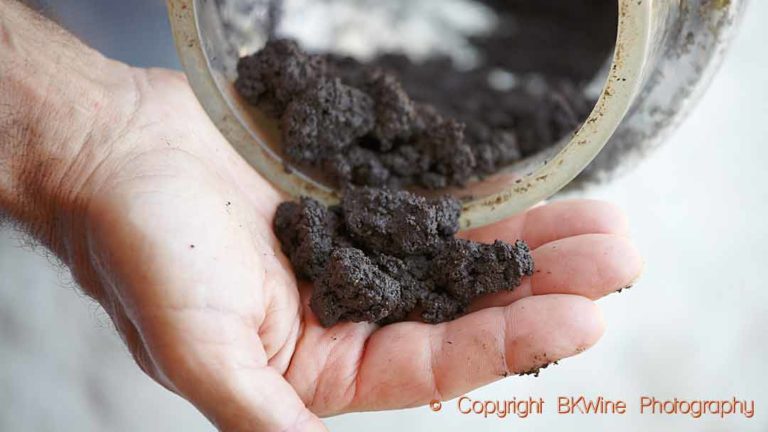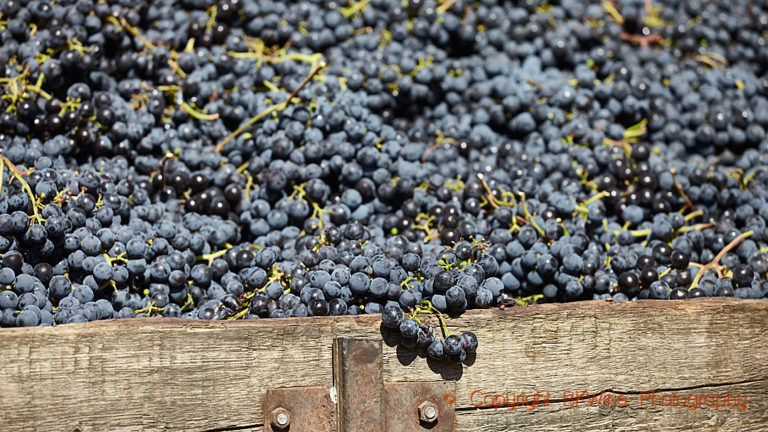More and more consumers are buying organic wines. Today, the organic vineyard surface in the EU is twice as large as it was 10 years ago. Demand for organic wine is likely to soon outstrip supply. But despite all this, it is not a question of a fundamental shift in wine growing. Conventional wine farming still dominates.
When you travel through the wine regions today, you can’t help noticing all the grass and flowers that grow in the vineyards, in the rows between the vines. It is a sign that more and more producers are abandoning chemical weed control. And it’s not just organic growers who do it because they have to. Many “conventional” (meaning not organic) winegrowers have also realized the benefits of a green vineyard.
Everyone in the wine industry today talks about the environment and the importance of working sustainably. It’s something that is on every winemaker’s mind. They are facing more and more restrictions. When, where and how they can spray their vineyards is increasingly regulated. Synthetic pesticides that are considered dangerous are being phased out at an ever-faster rate.
The EU has recently set various environmental targets for its agriculture. One of these goals is that at least 25% of the total agricultural area in the Community should be organic in ten years’ time, that is in 2030. It feels quite ambitious since the figure today is only 7.5%.
For vineyards, however, the figure is slightly higher. Around 12% of the EU’s total vineyard area is organic. Not enormous either. But being organic is not the solution for all producers.
In a series of articles, we will try to explain and highlight the different aspects of organic, biodynamic and sustainable wine growing: the advantages and disadvantages, what certifications are available, what pesticides are used and why. We will also talk about natural wine. In this first article, we start with an overview of the different forms of farming that exist in the vineyards today.
This is an article in our eight-part series. Here’s the full series of articles on organic, biodynamic, natural and sustainable:
- Organic, biodynamic and sustainable wine, an overview | part 1
- Organic viticulture: What is it really? | part 2
- Organic wine: in the wine cellar | part 3
- Organic certification | part 4
- Biodynamics: What is it really about? | part 5
- Natural wines | part 6
- Sustainable wines | part 7
- The future of organic wines | part 8
- Bonus: Video master class on organic wine
There are three main groups of agriculture/viticulture:
- Conventional agriculture
- Sustainable agriculture
- Organic agriculture
Conventional agriculture
Conventional is the most common “standard” type of farming. It was gradually established after the First World War by the use of artificial fertilizers. After World War II, it took off in earnest with synthetic chemical pesticides and chemical weed control. The farmers were happy to have big and reliable harvests and a lesser workload.
Over time, people became aware of some unwanted side effects. They noticed that after a while crops became resistant to the synthetic pesticides so that higher doses were required. Health and environmental risks were discovered. Over the years, many synthetic pesticides have been banned and others have been added.
This does not mean that conventional wine growing necessarily is bad for the environment or dangerous. What’s important is how each producer works. It’s the details that count. In fact, many who claim to be conventional, are fact work sustainably (see below) and are also inspired by organic farming.
Organic agriculture
The basic idea of organic farming is that only natural products should be used. An organic producer is not allowed to use any synthetic chemical substances, that is, such substances that do not exist naturally but have been developed by man.
When the organic movement started to gain momentum in the 1960s, it was as a reaction to the synthetic pesticides and herbicides. When the EU launched its organic farming regulations in 1991, it opted for the definition that “organic is natural”. This should not necessarily be interpreted as everything that is synthetic is more dangerous than everything that is natural. But it is a definition that is easy to understand and attractive to consumers.
So, if you are organically certified or in conversion, you must not use any synthetic chemical products. (It is important to note that the concept contains two words, “synthetic chemical”. It is not the case that “chemical” product are banned.)
These are the rules:
- No artificial fertilizers
- No synthetic chemical pesticides or herbicides
- No genetically modified products
However, certain “natural” chemical substances such as copper and sulphur to combat fungal attacks are permitted. Everything that is chemical is not synthetic. So yes, organic growers do spray their vineyards chemically. Basically all organic producers use “chemical” pesticides to fight powdery and downy mildew. But not synthetic products. “This vineyard is not sprayed with pesticides” almost does not exist.
The use of copper is debated. In greater concentration, it is toxic to the environment. In fact, it is its toxicity that makes it an effective treatment against diseases. We will write more about copper in future articles.
There are rules for what organic growers are allowed to add to the soil to nourish it and how they can fight pests and diseases. Instead of artificial fertilizers, they use natural fertilizers. They may also use products based on certain plants and microorganisms. However, they cannot use any product they like just because it is natural. Just because something is natural doesn’t mean it is harmless. All products used for plant protection must be approved by the EU and the respective country.
Until 2012, we had no organic wine in the EU, only “wine made from organic grapes”. In February 2012, the member states approved a regulatory framework for the work in the cellar. So, between 1991 and 2012, it was only the work in the vineyard that was regulated. But since 2012 we have “organic wine” and the old concept “wine made from organic grapes” is no longer approved (since the rules for “organic” now covers the whole process, not only the vineyard).
The organic rules for vinification allow fewer additives and process aids than for conventional production, but the difference is not that great. It is up to each producer to choose whether he wants to go below the permitted limits or simply not use certain additives.
Organic farming is an official EU certification and the same rules apply to all countries in the Community. However, there are many different organisation that control and certify, different in each country, but they all adhere to the same rules. If you see the green EU leaf on the label of the wine bottle, you know what it means.
The same goes for wines made outside the EU, but sold in the EU. If they say they are organic then they must follow the EU rules. So, very simple, all organic wine in the EU follow the same rules.
Biodynamic agriculture
Being biodynamic is not the same as being organic even though they have many things in common. But there are also some important differences.
In short, biodynamic farming is organic farming plus the principles of the anthroposophist Rudolf Steiner on how to revitalize the soil in a natural way. Even more than for the organic producers, it is about using the properties of different plants to strengthen the vines and give them the ability to withstand diseases. They try rather to prevent diseases to get a foothold in the vineyards instead of curing diseases post-facto.
An important feature is the nine biodynamic preparations which are either added to the compost or sprayed over the vineyard in homoeopathic quantities. The two most important ones are 500 and 501, based on cow manure and finely ground quartz respectively. The other preparations are made with different plants.
Biodynamics is based on the anthroposophical philosophy, but that does not mean that all biodynamic winemakers are anthroposophists. Some parts of the principles are strange and esoteric. Others are easier to understand.
Many producers, however, are pragmatists, make trials, and see the result of biodynamic farming and that is enough for them. Others read Rudolf Steiner’s books and go deeper into his philosophy.
Sustainable agriculture
As consumers and producers eventually became more environmentally conscious, the “sustainability” movement caught on. Recent years’ debate on climate change has strengthened their cause.
A sustainable winery thinks about the environment as a whole: how to increase biodiversity around the vineyard, how to manage waste, how to reduce its energy use, how to handle logistics, how much the bottle weighs, etc. Sustainability is about keeping the entire production process environmentally friendly. Synthetic products in the vineyard are allowed but should be used sparingly. Today there are no clear boundaries between conventional and sustainable agriculture. In fact, many who call themselves conventional are in reality sustainable.
Sustainable wines can also be certified, in some countries with an official label (for example in France with HVE) but mostly through private labels. But the rules for sustainable farming are not so well defined. Rather than rules, there are guidelines that the winemaker should do his best to follow.
Why are not more producers organic?
The truth is that wine growing in many of the world’s wine regions is not easy without any synthetic products at all, sometimes almost not possible. To some extent, copper takes care of the worst fungal disease, downy mildew, but it can be very tough if it is a rainy year. France wants to ban glyphosate next year. Glyphosate is the active substance in most herbicides. If taken, it will be a very unpopular decision among the farmers, including many winegrowers, who see a time-consuming task ahead of them for which they may not be able to get remunerated. Are the consumers ready to accept a higher price? The whole environmental debate is extremely complex.
Don’t miss the other articles in this series on organics, biodynamics, sustainable, and natural wines. See the list at the beginning of this article.
If you want to know more about this subject you can read our book “Biodynamic, Organic and Natural Winemaking”.















